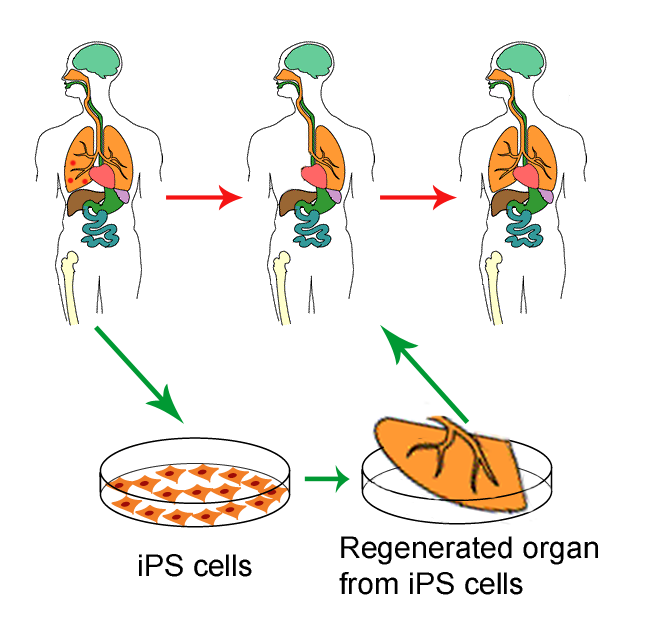
Cells taken from the tips of mouse tails and genetically reprogrammed to mimic mature liver cells can repair damaged livers.
The ultimate goal of such studies is to use the same technique to reprogram human cells, reducing the need for liver transplants in patients with end-stage liver disease. Although the study in mice, published online today in Nature, is still far removed from the clinic, it does provide an important proof of concept: it is thought to be the first time that cells reprogrammed using a process called transdifferentiation – produced without passing through a stem-cell stage – have been shown to fix a damaged organ.
“It’s really exciting,” says Paul Gadue, a stem-cell biologist at the Children’s Hospital of Philadelphia in Pennsylvania who was not involved in the study. “If this work could be translated to humans, it could be very powerful.”
New identity
Transdifferentiation has been used to generate blood cells, cardiac muscle cells and neurons from adult cells called fibroblasts. But liver cells pose a particular challenge to cellular reprogrammers, says Ira Fox, a pediatric transplant surgeon and stem-cell researcher at the University of Pittsburgh in Pennsylvania, who was also not involved in the work.
Mature liver cells have many functions, from breaking down toxins to producing many of the body’s proteins. “There’s no such thing as an artificial liver,” says Fox. “It’s an incredibly complex organ and it’s basically impossible to replace.”
Cell biologist Lijian Hui of the Shanghai Institute for Biological Sciences in China and his team tackled this problem by sifting through 14 proteins known to be important for activating genes in liver cells. The expression of three such proteins and the suppression of another called p19 was all that it took to persuade fibroblasts isolated from mouse tails to behave like liver cells.
The researchers then took these cells and transplanted them into mice lacking a gene needed to detoxify certain metabolic intermediates. Control animals that did not receive the transplants died within weeks, but 5 of the 12 animals that received the engineered cells survived.
The cells created by Hui’s team were not exact replicas of mature liver cells. The expression of several genes, including at least one involved in breaking down toxins, differed between normal liver cells and Hui’s reprogrammed cells. Hui believes that the transplants saved only some of the mice because the cells did not fully mimic mature liver cells.
“The cells aren’t perfect,” concedes Gadue, but he notes that researchers have struggled with liver cells derived from other methods as well.
Tough target
Those alternative methods include generating liver cells from adult skin cells by first converting them into a type of stem cell called an induced pluripotent stem cell, and then coaxing those stem cells into behaving like liver cells. A paper published today inScience Translational Medicine reports that human cells derived in this way repaired damaged mouse livers just as well as normal human liver cells.








